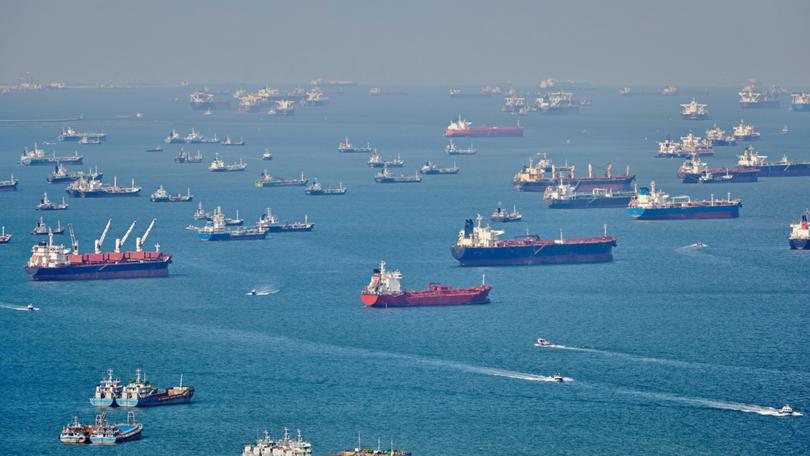THE ECONOMIST: Donald Trump would leave Asia with only bad options

At the 39th ASEAN Roundtable, hosted by a research institute in Singapore on October 28, the room was split. With Asia riven by an assertive China and a protectionist America, some attendees called for hard-headed thinking about trade-offs. Choices will have to be made; allegiances declared, they warned. A Donald Trump victory might, after all, bring brutal tariffs.
Most of the luminaries were unconvinced, however. “On the ground, two supply chains are developing,” a former Indonesian trade minister remarked. “We choose both.”
Asia has so far gained from the America-China trade war. “China plus one” strategies, in which firms add supply-chain nodes outside China, are common. The result has been a boom in foreign direct investment (FDI). In Vietnam, the biggest winner, realised FDI (ie, actually deployed projects) has risen by 22 per cent since 2021.
Sign up to The Nightly's newsletters.
Get the first look at the digital newspaper, curated daily stories and breaking headlines delivered to your inbox.
By continuing you agree to our Terms and Privacy Policy.Although few doubt Mr Trump would be disruptive, more sanguine scenarios are plausible. China would be the White House’s main target, and the rest of Asia could benefit from the superpower’s difficulties. Blowback from business and the courts could rein in Mr Trump.
To understand the divide in opinion, begin with Mr Trump’s most dangerous idea: a 10-20 per cent across-the-board tariff, accompanied by a 60 per cent levy on all Chinese imports. This would undoubtedly batter Asia.
America is the leading export destination for ASEAN countries, India and Japan, as well as the second-biggest destination for South Korea and Taiwan. ASEAN’s trade intensity, measured as the ratio of trade to GDP, is twice the global average. Asian countries with ageing populations require external demand to grow.
A simulation of a full-blown tariff scenario by Oxford Economics, a consultancy, finds that non-China Asia would be a net loser. In the long run American imports from the region would fall by 3 per cent and exports to it by 8 per cent.
Demands for retaliation would grow, driven by the political prerogative to “not look like a wimp”, notes Jayant Menon of the ISEAS-Yusof Ishak Institute, a Singaporean think-tank. Such tit-for-tat tariffs would amount to self-harm.
Economic theory suggests that protection can be optimal (in narrow balance-of-trade terms) if countries enjoy outsized market power in the trade of a particular good — a condition that does not hold in most of Asia. Worse still, American military partners including Australia, India and Japan would be forced to choose between their economic and security interests.
These dangers are clear. Some Trump loyalists play down the chances of an all-out trade war, however, insisting that the threat of enormous universal tariffs is merely a negotiating tactic. Although a more vanilla ratcheting up of the America-China trade conflict would be less devastating, it would still pose risks.
For a start, protracted uncertainty would hurt commerce. A recent study by the IMF finds that an increase of one standard deviation in uncertainty — measured by mentions of “uncertainty” in reports from the Economist Intelligence Unit, our sister company — corresponds to a 5 per cent fall in bilateral trade, with stronger negative effects in countries more deeply integrated into global value chains.
New tariffs narrowly directed at China would have knock-on consequences for the rest of Asia. Many Asian countries’ exports to China are still subsequently re-exported to America. Tariffs on China would therefore lower demand, especially for ASEAN countries, from where exports to China have risen as more Chinese firms build bases in the region.
American tariffs on China would also redirect subsidised Chinese exports to the rest of Asia, increasing protectionist pressure. This is a widespread fear among Asia’s economic ministers, says Steven Okun of APAC Advisors, a consultancy.
Countries are already responding to cheap Chinese goods: Indonesia, for instance, is plotting a 100-200 per cent across-the-board tariff on Chinese imports and this month banned Temu, an e-commerce app. In January Malaysia slapped a 10 per cent excise tax on low-value online imports.
Even if China is the main target, the rest of Asia may fall foul of the White House’s measures as it goes after Chinese goods that are being re-routed through third countries. President Joe Biden’s Department of Commerce has placed duties on Chinese firms circumventing American solar-panel tariffs by shipping them through Cambodia, Thailand and Vietnam.
Mr Biden’s measures are based on rigorous supply-chain-tracing investigations. Kamala Harris would probably take a similarly careful approach. Mr Trump, by contrast, is likely to dole out punishments whenever he sees fit. China would bear the brunt, but the rest of Asia would suffer too.
